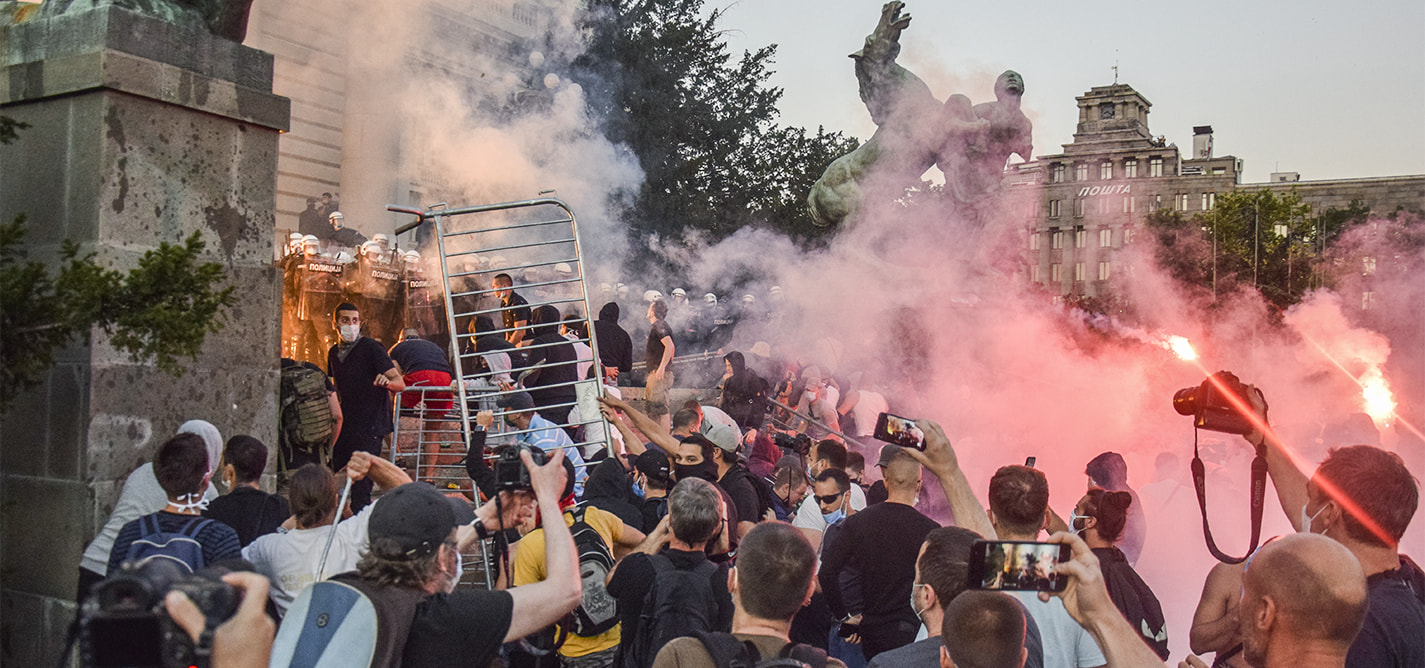
Resistance, build-up, violence, let-up
How the protests in Serbia began and unfolded.
|24.07.2020
|
And then it was as if the emergency had never happened in the first place.
The official data reveals that the number of new cases plateaued by the elections, they did not exceed 100.
According to bystanders, the police physically attacked a cyclist at the protests in Novi Sad, one of the policemen "kicking him as he was lying on the ground defenseless".

Dejan Kožul
Dejan Kožul is a journalist working for various media in Yugoslav space (Novosti, Lupiga, FTV, etc). For more than eight years he was the editor and anchor for the radio show KUPER which was broadcast on BH Radio, Radio Republika (Novi Sad), Radio Rojc (Pula), KLFM (Split), and Radio Apart (Beograd). He describes it as the territory with the most freedom and the ability to broadcast because there are no taboos.
This story was originally written in Serbian.